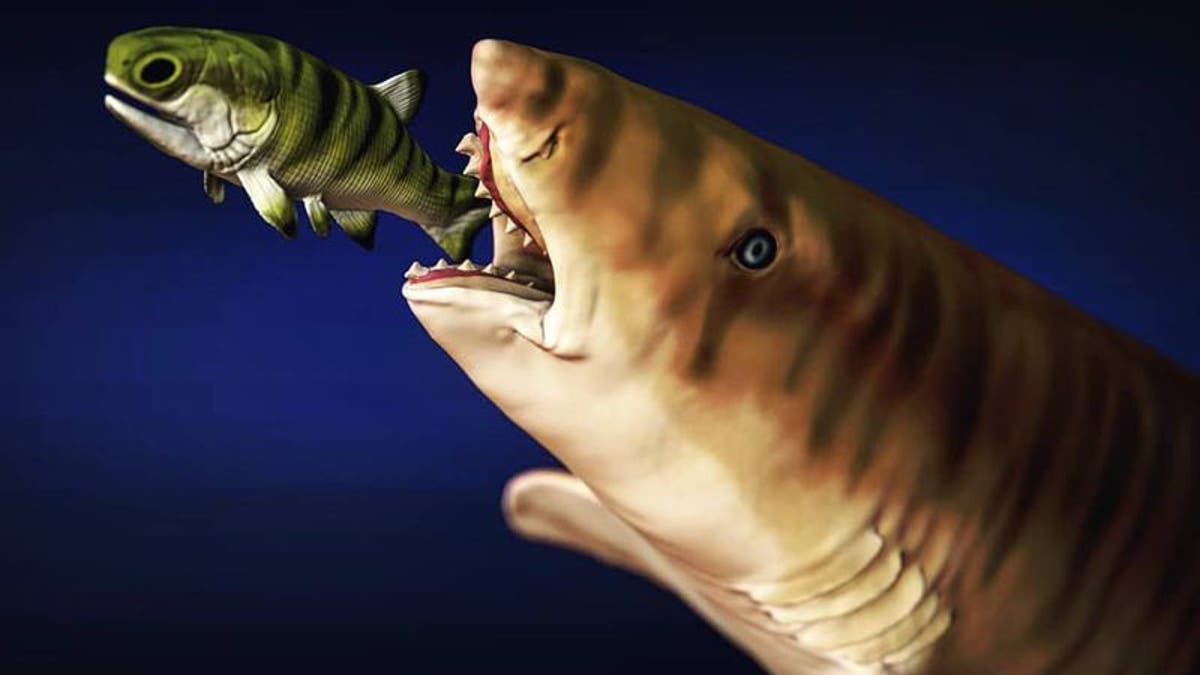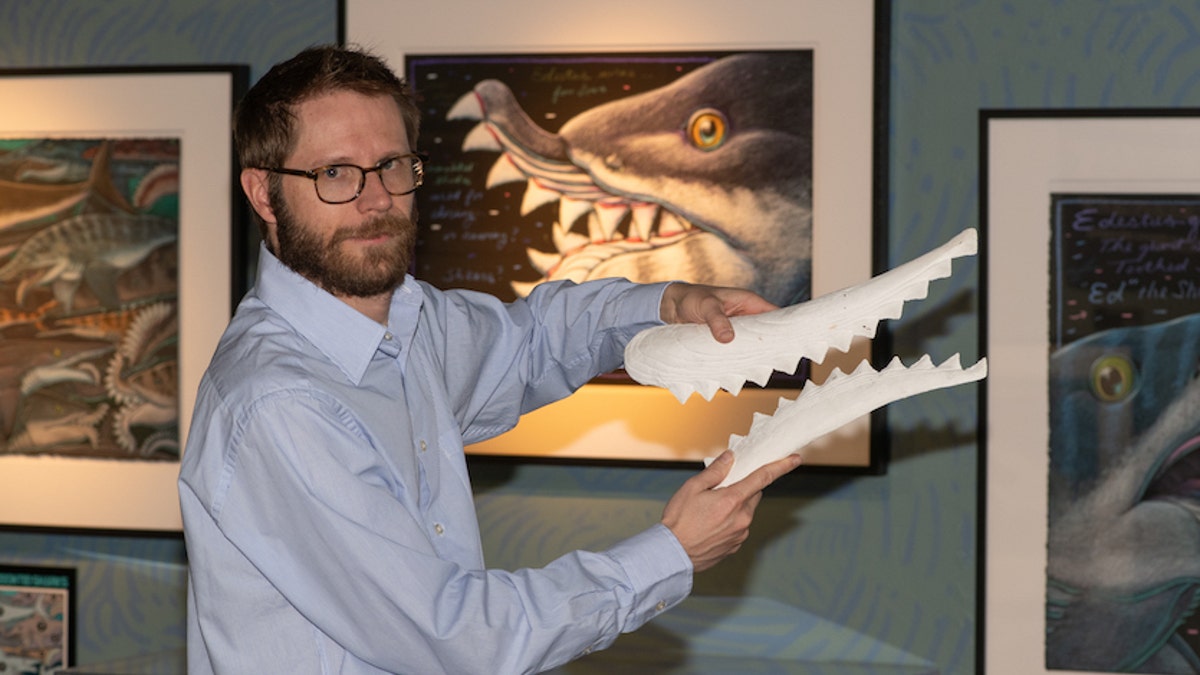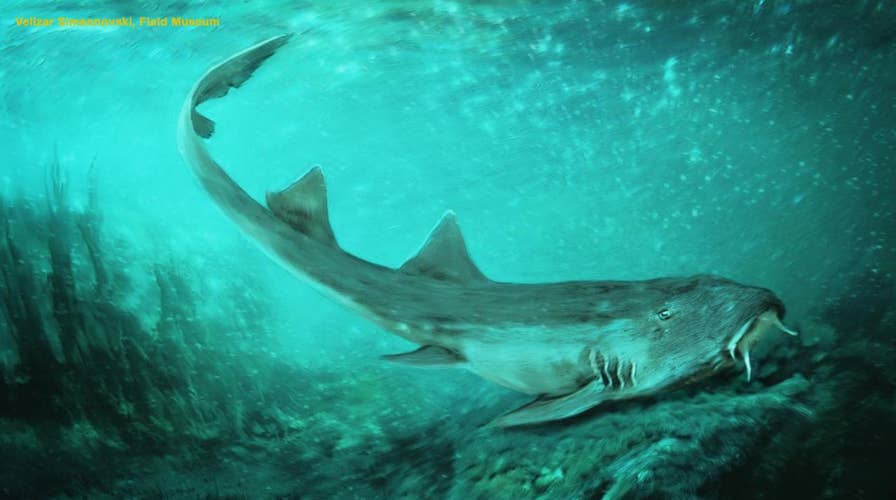For years, a mysterious ancient "scissor-toothed" shark puzzled scientists with its odd-shaped jaw, causing many to wonder just how the "weird" creature's chompers worked.
So, a group of researchers from Idaho State University began to tirelessly work to recreate the mouth of the shark — known as the Edestus, which went extinct 330 million years ago — to better understand how the fish captured and consumed its prey.
“The Edestus is a little bit older in time than the buzzsaw shark, but they are part of a bigger family of weird, ancient sharks that all have tooth blades on a spiral in the middle of their mouth,” Leif Tapanila, Idaho State University geosciences professor and director of the Idaho Museum of Natural History, explained in a recent news release. “Edestus, instead of having the full spiral, has a blade in the upper jaw and a blade in the lower jaw.”
GREAT WHITE SHARK KILLS DOLPHIN, LOSES MEAL TO EVEN BIGGER SHARK
The unique curve of the shark's teeth allowed the shark to easily slice open its prey.

The unique curve of the shark's teeth allowed the shark to easily slice open its prey. (Idaho State University)
“[The shark would use its jaws to] chop the ‘scissors’ down toward each other, stop just short, and pull back to slice the meat across," the researchers explained.
The Idaho researchers published their findings in The Anatomical Record, describing for the first time in detail how the Edestus developed its bite. The reconstructed jaw of the shark reveals how the shark "grasped, sliced and pulled prey" into its throat.
“It has a really interesting jaw mechanism that is totally unique to sharks, so it is fun to solve that kind of mystery and share that with the world,” Tapanila said.
“Edestus, instead of having the full spiral, has a blade in the upper jaw and a blade in the lower jaw.”
Working alongside the Idaho Virtualization Laboratory in the Idaho Museum of Natural History, Tapanila said a group of scientists were able to reconstruct the Edestus' entire jaw which is rare.
“We found a skull of Edestus that was collected over 50 years ago and waiting to be rediscovered at the Field Museum in Chicago,” Tapanila explained. “That’s where this animal is housed, and we did the same kind of tricks, digitizing it and putting the puzzle pieces back together to construct the skull for the first time.”
'VERY RARE' SHARK NURSERY DISCOVERED DEEP BELOW THE SURFACE: 'IT WAS INCREDIBLE'
According to Idaho State University, this is the first time ever the skull of the "scissor" shark has been put together.
“And just like other sharks, we find fossil teeth all the time, but finding a complete skull is ultra-rare,” Tapanila said. “It turned out the Field Museum had one. We found out about it and started working on it.”

Idaho Museum of Natural History Director Leif Tapanila holds a replica of the Edestus' sharp-toothed jaw. (Idaho State University)
Other prehistoric sharks, like the “buzzsaw shark” Helicoprion, used to be compared to the Edestus. But after studying the Edestus' bite more closely, the researchers can confidently say the shark was completely different in how it fed.
“So far as I know, this is a unique type of feeding,” Humboldt State University paleontologist Allison Bronson told Smithsonian Magazine.
“The jaw of Edestus seems to be primarily developed to quickly and fatally amputate its prey, snapping them in half, and presumably picking up the falling pieces after the victim was subdued,” Tapanila reiterated to the magazine, adding that they found "decapitated and de-finned fish chunks" in deposits that confirm their knowledge of the Edestus.





















